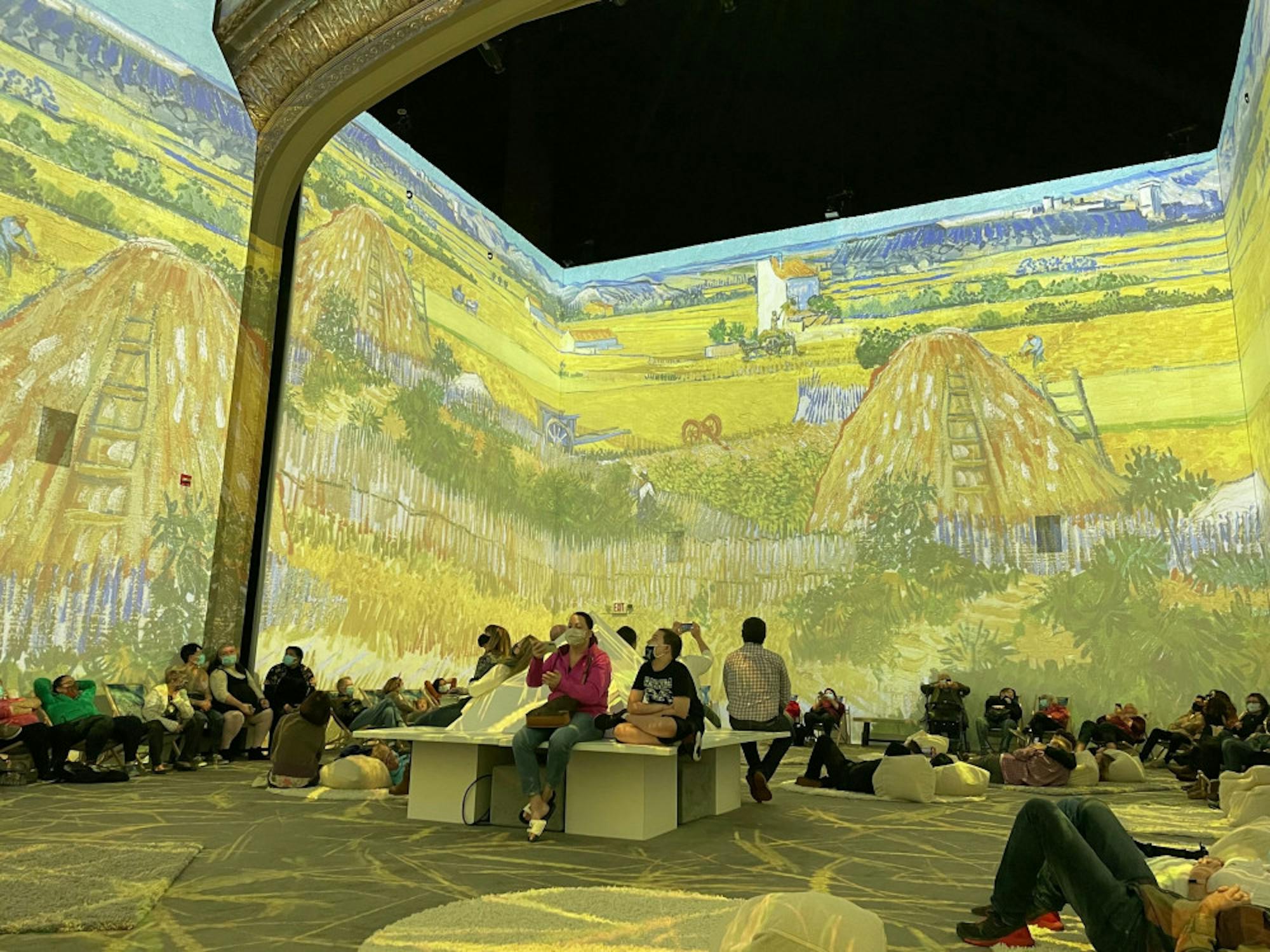After multiple delays, complaints and a lengthy legal battle involving its organization’s deceptive name, on Oct. 6, event company Fever finally opened the doors to its newest exhibition. “Van Gogh: The Immersive Experience” iscurrently on show at Boston’s Strand Theater.
Despite its reportedly misleading marketing and poor organization, as someone deeply involved and interested in impressionist art history, I was excited to visit the exhibition regardless and learn more about Van Gogh from a historical and artistic perspective. But as I left the exhibition’s main presentation, I could safely say that it did not live up to my own, nor probably any other art lover’s, expectations. Overall, “Van Gogh: The Immersive Experience” has very little depth, only scratching at the bare surface of who Vincent Van Gogh was as a person and as an artist.
Upon entering, visitors first travel through a series of rooms providing context about Van Gogh’s life and inspirations. Among the various attractions in these opening halls, by far the most impressive are the small projections of Van Gogh’s works on 3D structures. An example of these involves various self-portraits of the artist being mapped and projected onto a large 3D model of his face. In this instance, Fever provides an interesting visual interpretation of Van Gogh’s unique approach to texture and movement in real space. Unfortunately, the opening rooms’ impressive sights end there. Scattered throughout the gallery, the exhibition features several real-world recreations of his paintings, such as a full-size bedroom organized and painted to mimic his famous "Bedroom in Arles" (1888). But while these rooms may be fun for a quick selfie, their poor quality makes them appear as handmade backdrops in an elementary school play rather than a professional multimillion-dollar production. These visual attractions are accompanied by cheap prints of Van Gogh’s paintings with shallow descriptions of his life. Often restating the same points using different words and even including a few noticeable typos, these information panels failed to explore the artist’s life and struggles much beyond simply stating that he suffered from depression.
Despite the rough edges in the opening rooms of “The Immersive Experience,” its main attraction, a 360-degree projected presentation of Van Gogh’s work in a 35-foot-tall room, is, for the most part, quite enjoyable. Visitors have the option to sit in various reclining chairs and pillows laid across the floor, allowing them to simply sink into their seats and enjoy the show. The 35-minute presentation cycles through Van Gogh’s most famous paintings with edited, animated details, which are accompanied by equally immersive sound and music. In the portion featuring "Starry Night" (1889), the originally static painting transforms into a visual spectacle. Fluid animations cover the painting’s sky, accompanied by a soothing orchestral soundtrack that evokes a sense of wonder. In outdoor works like "Wheatfield with Crows" (1890), the sound of crows’ cries and rustling trees truly makes you feel as though you are standing in the field with Van Gogh himself.
While these first few moments are unforgettable, as time passes, flaws in the presentation slowly become more apparent. Cheap powerpoint-like transitions are used to fade and dissolve between different works and themes.To introduce his Japonisme period and his self-portraits, the exhibition chooses to frame these paintings within distracting, animated 3D graphics of Japanese architecture and gothic churches respectively, ultimately eliminating the viewer’s immersion. Finally, the last portion of the exhibition chooses to explore Van Gogh’s depression through his paintings. But rather than paint a genuine narrative of Van Gogh’s emotional journey as an artist, the exhibition does nothing more than simply flash his self-portraits in synchronization with darker music, ultimately eliminating all semblance of the ‘immersive experience’ in favor of a pseudo-intellectual message about mental health.
But it was not until after the presentation ended that the experience’s immediate purpose as a quick cash grab became clear. Using the exhibition’s VR room, which utilizes virtual reality headsets to put viewers directly into Van Gogh’s paintings, costs visitors an extra $5. Anyone with a simple virtual reality headset could easily recreate this experience using free Youtube videos.To put insult to injury, the gift shop was full of simple, yet incredibly expensive, products with Van Gogh’s designs robotically slapped onto them, as though they were hastily designed on Redbubble. A book of all of his works, which costs $18 on Amazon, costs more than $60 at “The Immersive Experience” gift shop.
Overall, while the exhibition admittedly does manage to immerse art lovers into Van Gogh’s works with its 360-degree presentation, if only for a moment, it ironically fails to comprehend or deliver any larger message about Van Gogh beyond surface-level biographical information. Despite being about a man who only ever sold one painting during his entire life and struggled with mental health issues throughout, the exhibition can’t help but come off as a cheaply tossed-together cash grab attempting to make money off of Van Gogh’s publicly available works. If anyone truly wants to explore Van Gogh’s paintings, I recommend going to the MFA (free with a Tufts ID) or visiting “Imagine Van Gogh,” which opens in Boston on Dec. 21 and seems to have even larger rooms, for a more professionally crafted presentation, and a less problematic message.






